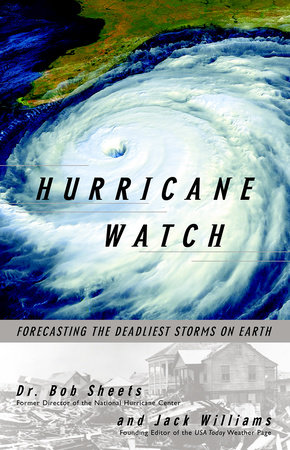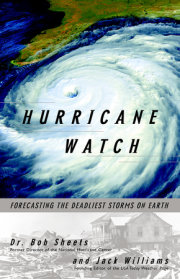In the Whispering Pines neighborhood about twenty miles southwest of downtown Miami, Tom Ochmanski and his wife, Laurie, have put their one-year old son, Ryan, and two-year-old daughter, Caitlyn, to bed early in the evening. Whispering Pines is not in an evacuation zone and the Ochmanski house is a strong one--they think. Around midnight, Tom and Laurie and Laurie's mother, Lee Bolander, finally try to get some rest, but the howling winds wake them two hours later. As the adults sit in the living room, watching reports on their battery-operated television set, squalls of heavy rain and high winds became stronger and more and more frequent. By 4:45 a.m., winds are probably gusting to over 150 or 160 mph, and debris slamming into the house creates an almost deafening roar. Above this roar, parents and grandmother hear breaking glass in Ryan's bedroom. Tom rushes in to find the window shattered by flying debris and scattered around the room, but, remarkably, Ryan is not cut or hurt. Tom grabs him and Laurie gets Caitlyn from her bedroom and the entire family huddles in the living room, close to the hallway entrance. They hear the other windows breaking on the north end of the house. As Hurricane Andrew's eye wall moves directly over them, the screaming wind becomes even more terrifying. The Ochmanskis know when the wind shifts direction because the loud thumps of striking debris now come from the east side of the house.
Tom shines a large flashlight at the top of the front wall and sees it pulling away from the ceiling. This is a reinforced concrete tie beam connecting the walls to the roof, and these winds are doing their best to lift it right off the house. The family moves closer to the hallway door and starts praying. Suddenly and with a tremendous crash the entire front of their house slams inward, while the front half of the roof is ripped away. A large blunt object strikes Tom in the back, knocking him across the room. Laurie quickly crawls through the debris to the hallway, taking the two terrified children with her. She places Ryan and Caitlyn on shelves in the linen closet off the hall? way and crouches in the open doorway to protect them with her own body.
Where is Tom now? Where is her mother? Are they alive or dead? Laurie has only her fears and her prayers.
* * *
Great tropical cyclones are the largest and most destructive storms on the face of this planet; collective memory never forgets the passage of a powerful deadly storm such as Hurricane Andrew in South Florida in 1992. In the past, these typhoons and hurricanes struck without warning. Today, this never happens. We can forecast the great storms with increasing, often remarkable, accuracy. We can save lives and property--some lives, some property. However, we will never be able to stop these storms. The residents of shorelines of the world exposed to storms from the tropics, and the tourists who flock to these sandy paradises will always prick their ears when they hear the words, "A hurricane watch has been posted for. . ."
Copyright © 2001 by Dr. Bob Sheets and Jack Williams. All rights reserved. No part of this excerpt may be reproduced or reprinted without permission in writing from the publisher.









